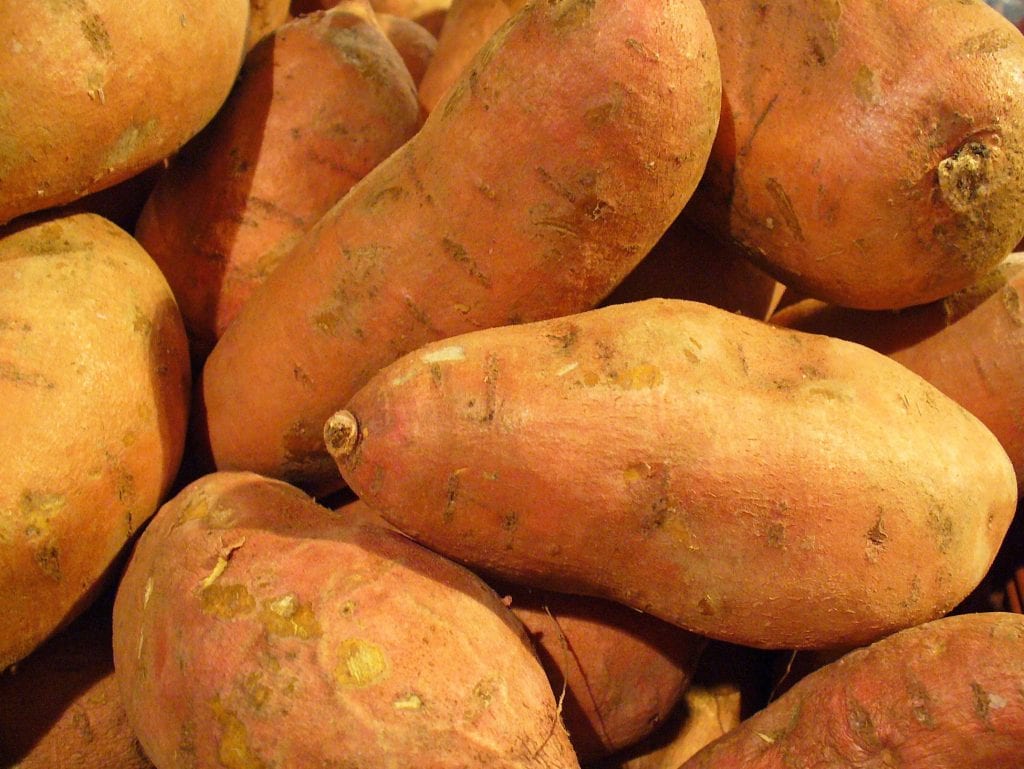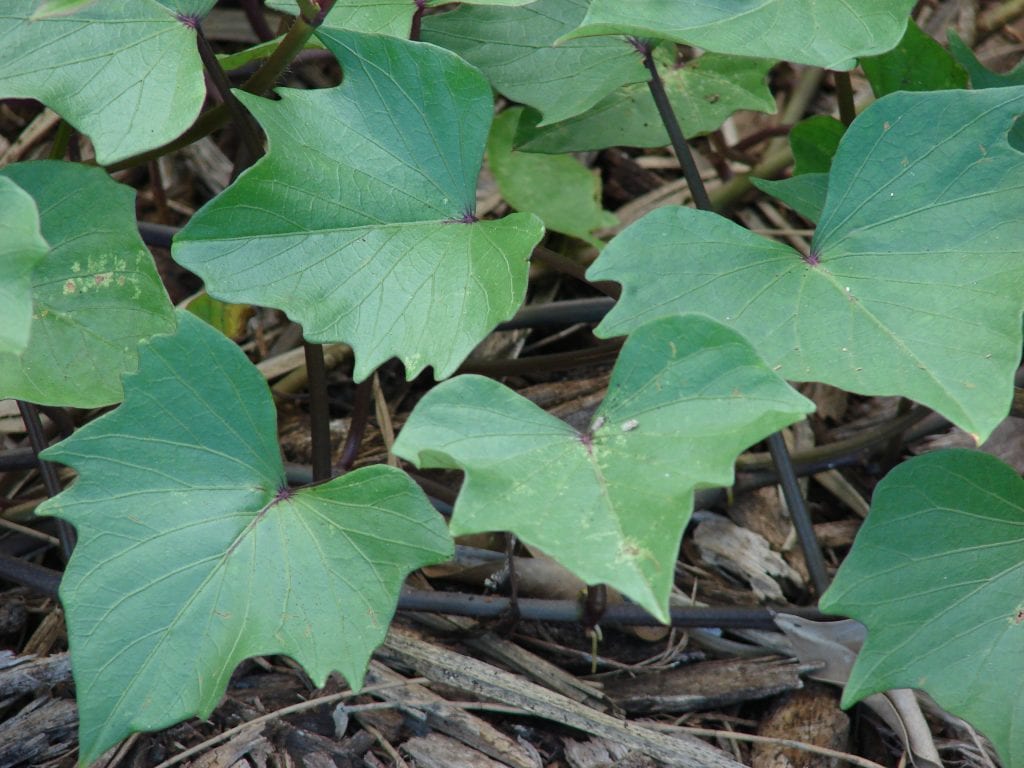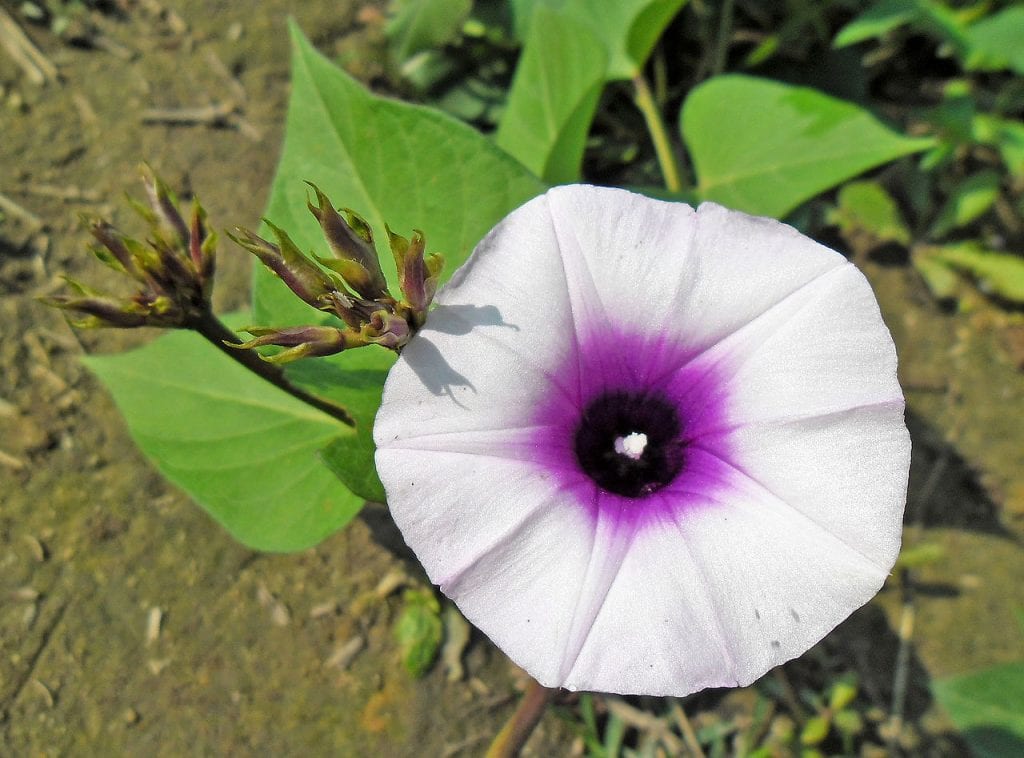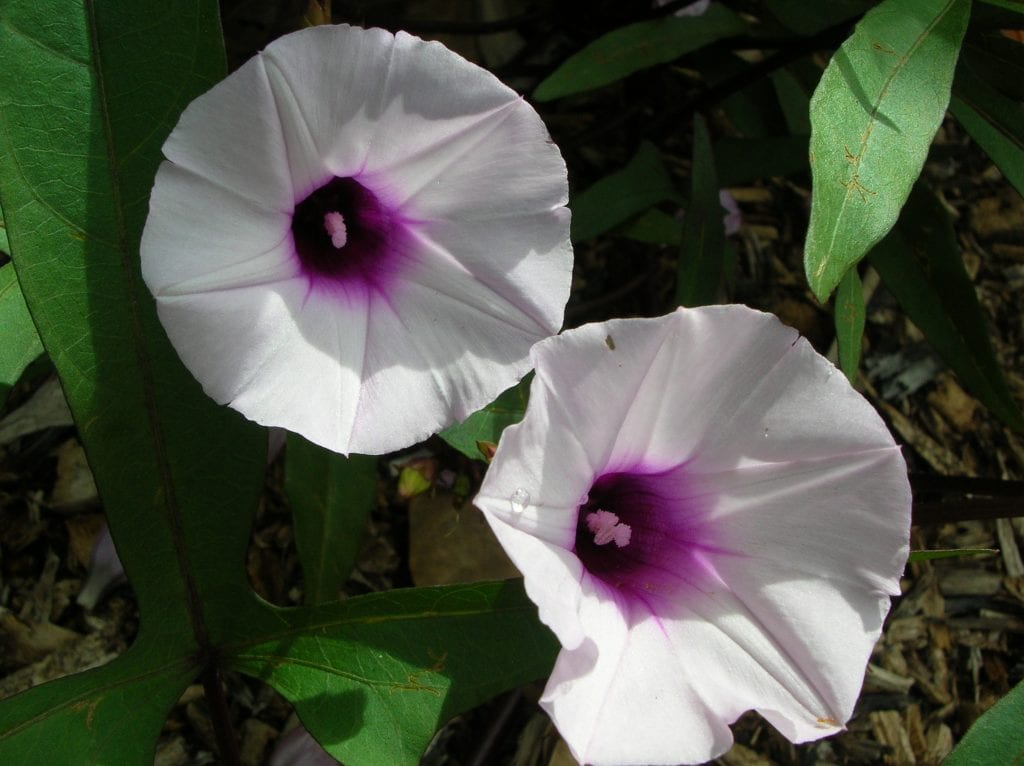
The sweet potato is a vegetable native to tropical America whose easy cultivation and exquisite flavor are making it one of the increasingly important foods that we have in the kitchen. To savor it, we can go to the supermarket and buy it, or grow it in the garden.
I recommend the second option, since this way you will know at all times the products you use to take care of it, thus ensuring that you can taste a sweet potato of exquisite quality. If you don't know how to do it, don't worry. I'll help you 🙂.
Sweet potato characteristics

The sweet potato, also known as Malaga Potato, Sweet Potato, Sugared Sweet Potato, Sweet Potato or Sweet Potato, is a perennial plant that is grown as an annual that belongs to the botanical family Convolvulaceae. Its scientific name is Ipomoea sweet potato, It is characterized by having large olive green leaves, with the nerves visible to the naked eye. The stems are long, can reach up to 6m, and thin, mottled green with purple.
The flowers are normally solitary, with 5 petals, pink to blue in color. Once they are pollinated, the fruit begins to mature, which will end up being a globose, chestnut capsule, inside which they will be found. seeds that are flat on one side and convex on the other.
Along with the roots, false tubers grow, which are the sweet potatoes themselves. They have a sweet taste, and they are tender.
Varieties most cultivated in Spain
There are many cultivars of sweet potatoes, both white and yellow sweet potatoes, but in Spain the most cultivated and, therefore, the easiest to get, are:
- Yellow of Malaga
- Batatillas from Nerja
- Californian
- Centennial
- Moose
- Lisa from Tucumán
- Red
- Violeta
How is it grown?
To have a good harvest it is necessary to take care of the plants regularly. This will give them enough energy to develop strong and large tuberous roots (the false tubers). So, if you want to prepare delicious sweet potato recipes, follow our advice:
Siembra
- The first thing to do is acquire the seeds in late spring.
- Once you have them, sow them in seedling trays or in pots with universal growing medium or a specific one for seedlings. You will find both for sale in nurseries and garden stores.
- Then water thoroughly, leaving the soil well soaked.
- Finally, place the seedbed in an area where it can get sunlight throughout the day.
They will germinate after two weeks.
Transplant
- When the seedlings are at least 10 cm tall, they must be removed from the pot.
- Then, the seedlings are separated, removing a little substrate from the roots, enough so that they can be untangled.
- Next, plant each one in an individual pot of at least 20cm in diameter with the same substrates mentioned above (universal or for seedlings).
- Water.
Planting in the garden
- If you feel like growing in your garden, once you see roots coming out of the drainage holes, you have to make a planting hole in it.
- Then remove the seedling from the pot.
- Then plant it in the ground.
- Water.
If you have two or more specimens, it is important that you leave a distance of about 25cm between them so that they can grow and develop well.
Sweet potato maintenance

You have your sweet potato plant, but how do you take care of it? If you have questions about its maintenance, do not stop reading:
- Exhibition: full sun.
- Irrigation: frequent, especially in the hottest months. It is recommended to water every 2 days in summer and every 3 the rest of the year.
- Subscriber: During spring and summer, it must be paid with liquid organic fertilizers, such as guano, following the instructions specified on the package.
- Harvest: when its leaves begin to dry, it will be time to collect its roots.
- Multiplication: by normal root cuttings in late winter / early spring. These are planted in pots with sandy substrate (vermiculite, coconut fiber or akadama) or in peat and watered preventing the substrate from drying out completely.
Pests and diseases of sweet potato
Although it is a fairly resistant plant, unfortunately it can also have a number of problems, which are:
Pests
- Wire worm: the larvae are golden in color and the rings are very marked. It feeds on roots, but can be easily fought with Chlorpyrifos.
- Black donut: it is a caterpillar that feeds on leaves and fruits. It can be fought with Bacillus thuriengensis, which is an ecological insecticide; or with Chlorpyrifos.
Management
- Fusarium: it is a fungus that attacks the root neck, necrotizing it. The first symptoms are yellowing and subsequent wilting of the leaves. Treatment consists of spacing the irrigations and / or improving drainage, and treating the plants with a systemic fungicide.
- Mosaic: it is a virus that causes symptoms such as necrosis in some parts of the leaves, curling of the leaves, and of course mosaic. The only effective treatment is to remove the affected plants to prevent the others from becoming infected.
- Virus: there are many viruses that affect plants in general and sweet potatoes in particular, causing symptoms such as rickets, variegated petals, deformations in the leaves, or mosaics. It is difficult to know for sure if a plant has been infected, so when in doubt it is best to take a sample to a laboratory. If the diagnosis is finally confirmed, unfortunately only infected plants can be removed.
Properties

Sweet potatoes are an excellent vegetable that will help you take care of your health almost without you noticing. It is rich in vitamin C, and also contains minerals that are essential for the proper functioning of the body, such as magnesium, phosphorus and fiber. And as if that were not enough, 200 grams of sweet potatoes provide you with only 195 calories, so it helps you lose weight by not having fat.
But not only that, but you should also know that has antioxidant properties and it will help you prevent cataracts and cardiovascular problems.
How is the sweet potato cooked?
If you've never cooked it before, don't be afraid of it: you can prepare the same recipes as with potatoes. It is roasted or cooked wholeThe skin is then removed and served with, for example, a little salad and grilled cuttlefish. Delicious 😉.
Yes, do not keep it in plastic bags or in the fridgeas it would go bad right away. Ideally, store it in a slightly damp, ventilated and cool place, where it can be stored for up to a week.
So, do you dare to cultivate it?
Hey.
It is almost autumn and I have planted some shoots that have caught me.
I would like to keep this plant until spring.
Is it possible to do that?
Greetings.
Hey.
If you can have them indoors in a room where a lot of natural light enters and they are away from drafts, no problem.
A greeting.